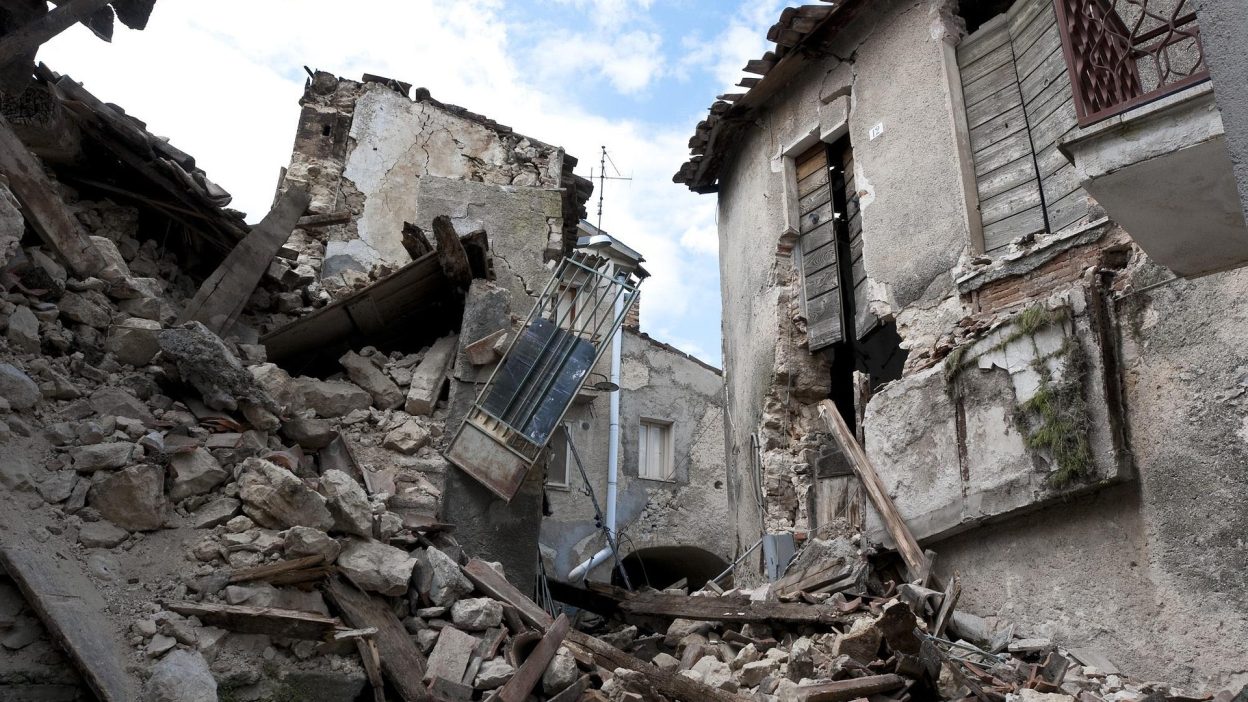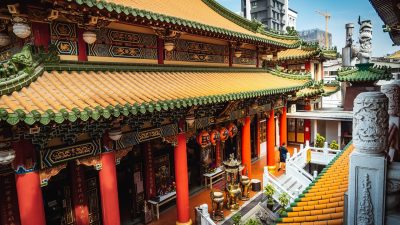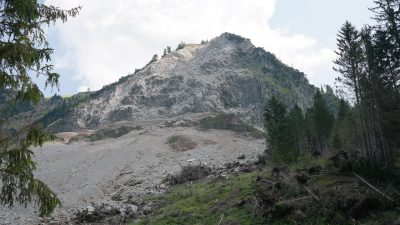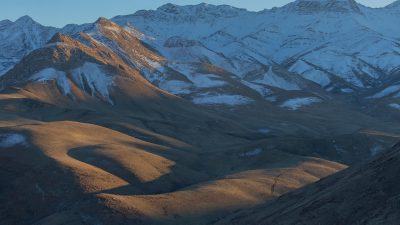Japan’s Forgotten Catastrophe That Shook History
1. A Nation Shaken: Understanding the 1498 Meiō Earthquake
The 1498 Meiō Earthquake is one of the most devastating seismic disasters in Japanese history, yet it is often overlooked due to the passage of time and the lack of extensive records. Despite this, its impact was enormous, causing widespread destruction, altering landscapes, and leaving a deep imprint on the people of Japan. This catastrophic event occurred during the Muromachi period, a time when Japan was already facing internal conflicts and social upheaval. The sudden and violent shaking only worsened the situation, adding another layer of suffering to the population.
Historical records suggest that the earthquake struck with an immense force, reducing villages and towns to rubble in an instant. Given the era, there were no modern construction techniques to mitigate the damage, making the devastation even more severe. The tremors triggered secondary disasters, including landslides and fires, further compounding the tragedy. However, the most destructive element of all was the massive tsunami that followed, wiping out entire coastal communities. Despite its severity, the Meiō Earthquake remains understudied, leaving many unanswered questions about its true impact and long-term consequences.
2. The Science Behind the Disaster: What Caused the Quake?
Japan sits on the Pacific Ring of Fire, a region notorious for its high seismic activity due to the movement of tectonic plates. The Meiō Earthquake is believed to have originated from the Nankai Trough, a subduction zone where the Philippine Sea Plate is being forced under the Eurasian Plate. This process builds up immense stress over time, eventually leading to powerful earthquakes. Experts estimate that the 1498 Meiō Earthquake had a magnitude of approximately 8.6, making it one of the strongest recorded in Japan’s history.
The nature of this subduction zone makes it prone to megathrust earthquakes, which tend to be accompanied by massive tsunamis. In 1498, without the benefit of modern seismic technology, the people of Japan had no warning of the impending disaster. The sudden release of tectonic stress caused violent ground shaking, triggering collapses of buildings, landslides, and cracks in the earth. The destruction spread quickly, and before the affected communities could even begin to grasp what was happening, the deadly tsunami followed.
Interestingly, the 1498 Meiō Earthquake shares characteristics with other major seismic events in Japan’s history, such as the 1707 Hōei Earthquake and the 2011 Tōhoku Earthquake. These events underscore Japan’s ongoing vulnerability to large-scale earthquakes, reinforcing the need for continued research and preparedness.
3. The Devastating Toll: Deaths, Injuries, and Statistics
The Meiō Earthquake left a trail of devastation in its wake, with thousands of lives lost and entire towns obliterated. Though exact figures remain uncertain due to limited historical records, estimates suggest that over 31,000 people perished as a result of the earthquake and the subsequent tsunami. Given the period’s lack of medical infrastructure, many of the injured succumbed to their wounds, further increasing the casualty count.
Key Statistics:
- Magnitude: Estimated at 8.6.
- Deaths: Over 31,000 people.
- Tsunami Waves: Estimated height of 10 metres.
- Buildings Destroyed: Thousands of homes and temples reduced to rubble.
- Economic Impact: Widespread famine and economic instability due to loss of farmland and trade routes.
The tsunami, in particular, exacerbated the death toll by sweeping away villages and drowning those who attempted to escape. Entire coastal communities vanished, with survivors left stranded, homeless, and without food or clean water. Disease quickly spread, claiming even more lives in the aftermath of the disaster.
4. The Tsunami’s Wrath: Waves That Engulfed Japan
The Meiō Earthquake was not just a seismic disaster; it was also a tsunami catastrophe. Historical records describe how the sea receded dramatically before surging back with terrifying force, swallowing entire coastal settlements. The tsunami waves, estimated to have reached heights of 10 metres, struck Suruga Bay, Kii Peninsula, and other coastal regions, causing unfathomable destruction.
Tsunamis of this magnitude are particularly deadly due to their immense speed and force. The 1498 tsunami carried away people, livestock, boats, and even entire sections of temples and castles. Survivors described a wall of water crashing down upon them, leaving them little time to react. Those who managed to cling to debris or scramble to higher ground were among the few who lived to tell the tale.
Beyond immediate fatalities, the tsunami’s impact on agriculture and infrastructure was profound. Saltwater inundation ruined rice fields, leading to years of famine. Ports and trade routes were also severely damaged, disrupting economic activity across Japan. The sheer scale of the destruction left Japan’s rulers struggling to manage the crisis effectively.
5. Cultural and Social Aftermath: How Japan Recovered
The Meiō Earthquake profoundly altered Japan’s social fabric. Entire families and clans were wiped out, leading to shifts in power dynamics. Survivors faced unimaginable hardships, including homelessness, food shortages, and disease outbreaks. Without a strong central government to coordinate relief efforts, local communities relied on mutual aid and traditional coping mechanisms.
Religious institutions played a crucial role in helping people cope with their grief. Many turned to Buddhist and Shinto practices, believing the disaster was a form of divine retribution. Temples were rebuilt, and new shrines were erected to honour the dead and appease the gods. Stories of supernatural warnings and ghostly apparitions from the disaster area became common, embedding the event into Japan’s folklore.
Reconstruction was a slow and painful process. With limited resources, people had to rebuild their homes using traditional methods, making them vulnerable to future earthquakes. The lack of a coordinated recovery strategy meant that many communities never fully regained their former prosperity.
6. Did the Government Respond? A Look at Historical Records
Unlike modern disaster responses, which involve government-led relief efforts, the 1498 earthquake response was largely localised. At the time, Japan was in the midst of the Muromachi period, a time of political fragmentation where power was divided among feudal lords known as daimyōs. These local rulers took responsibility for aiding their own domains, but resources were stretched thin.
Some daimyōs reportedly provided food, shelter, and rebuilding materials to their people, while others were unable to assist due to their own losses. The lack of a centralised disaster management system meant that many affected areas received little to no aid, leaving survivors to fend for themselves. However, the disaster did lead to a shift in urban planning, with some settlements relocating further inland to avoid future tsunamis.
7. Lessons Learned: Could This Happen Again?
Seismic experts believe that Japan is still at risk of experiencing another mega-earthquake similar to the 1498 Meiō Earthquake. The Nankai Trough remains an active subduction zone, and historical patterns indicate that massive earthquakes occur in this region every 100 to 150 years. Modern technology has improved early warning systems, but the risk of devastation remains high.
Today, Japan has stringent building codes, emergency preparedness drills, and tsunami defense systems in place. However, given the unpredictable nature of earthquakes, there is still no foolproof way to prevent a disaster of this scale. The Meiō Earthquake serves as a stark reminder of nature’s destructive power and the ongoing need for vigilance.
8. Lessons from the Meiō Earthquake: Have We Learned Anything?
Despite the devastation caused by the 1498 Meiō Earthquake, Japan has experienced numerous other catastrophic earthquakes over the centuries. This raises the question—have we truly learned from this disaster? While Japan now has some of the most advanced earthquake-resistant buildings, early warning systems, and disaster preparedness measures, history shows that no system is entirely foolproof.
The Meiō Earthquake serves as a grim reminder that natural disasters are unpredictable, and reliance on technology alone is not enough. Community awareness, educational programmes, and rapid response systems are just as critical. The lessons from this catastrophe should not be forgotten, as failing to adapt can lead to repeated history.
9. The Meiō Earthquake and Its Relevance Today
Many believe that an earthquake of similar magnitude could strike again. Given the tectonic activity in Japan, it is not a matter of “if” but “when.” Scientists constantly monitor fault lines, especially around the Nankai Trough, which has the potential to generate another megathrust earthquake.
With rising sea levels and coastal developments, the impact of a similar tsunami today would be far more catastrophic. Cities like Tokyo and Osaka are heavily populated, making the potential death toll much higher than in 1498. The Meiō Earthquake remains relevant today, serving as a cautionary tale for governments, scientists, and the public.
10. Conclusion: A Disaster That Shaped Japan’s History
The Meiō Earthquake of 1498 was more than just a natural disaster; it was an event that altered Japan’s landscape, history, and cultural memory. With an estimated 30,000+ deaths, widespread destruction, and a tsunami that reshaped coastal areas, it remains one of Japan’s deadliest earthquakes.
While Japan has made significant progress in disaster preparedness, no country is immune to the power of nature. The Meiō Earthquake serves as both a warning and a lesson, reminding us that past tragedies must guide future safety measures.
FAQs
1. How many people died in the 1498 Meiō Earthquake?
Historical records estimate the death toll at around 30,000, but due to poor documentation, the actual number may have been higher.
2. What caused the Meiō Earthquake?
It was caused by a rupture along the Nankai Trough, a highly active tectonic boundary off Japan’s coast.
3. Did the earthquake trigger a tsunami?
Yes, a massive tsunami followed the earthquake, causing widespread destruction, particularly in Kii, Suruga, and Mikawa provinces.
4. Could a similar earthquake happen in Japan today?
Yes. Japan is located on multiple tectonic plate boundaries, making it highly susceptible to earthquakes. The Nankai Trough remains a major threat.
5. What was the biggest impact of the Meiō Earthquake?
Apart from the high death toll and destruction, the earthquake significantly altered Japan’s coastline and possibly caused structural damage to the Kamakura Daibutsu (Great Buddha statue).




